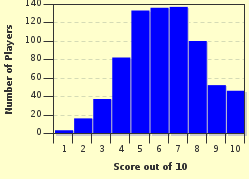Quiz Answer Key and Fun Facts
1. Ready? All right, here's your first question. Chemistry is such a broad science that it is sometimes divided in to five major branches. What are these branches?
2. Often in chemistry you get results with large amounts of digits. That's where significant figures come into play. How many significant figures are there in 8,300,342,040,000?
3. There are four states of matter: solid, liquid, gas, and plasma. What is the state of matter called plasma?
4. In chemistry you might hear the term kinetic energy. What exactly is kinetic energy?
5. John Dalton was one of the most important scientists, ever. What was one of his most recognizable contributions to the science of chemistry?
6. If two competing laboratories both claim to have discovered element 123 first, and cannot agree on a name for it, what should it be named until they agree on who synthesized the element first?
7. In the entire universe, what is the most abundant element?
8. Atoms that are of the same element, but differ in their mass numbers are called isotopes. Which of these elements has only one naturally occurring isotope?
9. I hope this quiz has been fun so far, folks. Now let's make these questions even more difficult. You ready? Okay, here's the question. What is a solution containing dissolved solute particles in dynamic equilibrium with undissolved solute particles called?
10. Where might you find americium-241 at in your house?
Source: Author
bigsoxy
This quiz was reviewed by FunTrivia editor
crisw before going online.
Any errors found in FunTrivia content are routinely corrected through our feedback system.


